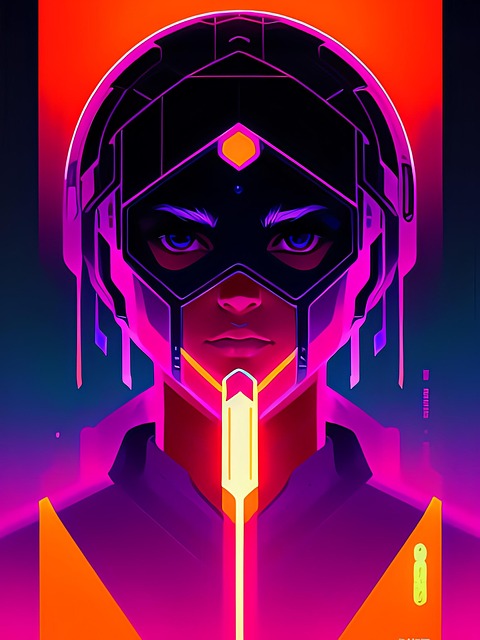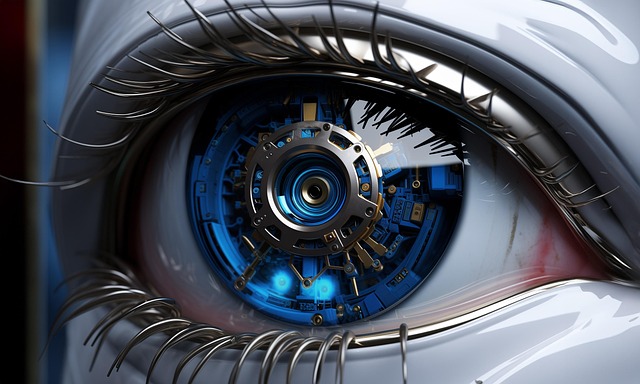Scripted AI Chatbots, powered by NLP and ML, offer predictable yet sophisticated interactions, handling common queries consistently without human intervention. They automate repetitive tasks, enhancing user experience with swift solutions while scaling operations cost-effectively. Challenges include creating natural flows and understanding nuanced intent, but future trends include multimedia integration and personalized interactions. As technology advances, these chatbots are set to revolutionize customer service, support, and even therapeutic applications, making them invaluable business assets.
In the ever-evolving landscape of customer engagement, chatbots have emerged as powerful tools. But what sets them apart? This article delves into the world of scripted AI chatbots, unraveling their essence and impact. We explore what these chatbots are, how they function behind the scenes, and delve into the myriad benefits they offer businesses. Furthermore, we navigate the challenges and anticipate future trends in their development, providing insights crucial for understanding this game-changing technology in the chatbot realm.
- What is a Scripted AI Chatbot?
- How do Scripted Chatbots Work?
- Benefits of Using Scripted Chatbots
- Challenges and Future Trends in Scripted AI Chatbot Development
What is a Scripted AI Chatbot?

A Scripted AI Chatbot is a type of artificial intelligence designed to engage in conversational interactions with users, guided by pre-written scripts and algorithms. Unlike their more advanced, unscripted counterparts, these chatbots operate within clearly defined parameters, making them ideal for customer service, sales, and support roles where predictable and consistent responses are crucial. By leveraging pre-programmed dialogues and response trees, scripted AI chatbots can efficiently handle a range of common user queries, reducing the need for human intervention in many situations.
These chatbots use natural language processing (NLP) to interpret user inputs and trigger corresponding scripts. The scripts are meticulously crafted to cover various scenarios, ensuring that the chatbot provides relevant and contextually appropriate answers. This structured approach not only enhances the user experience by offering swift solutions but also allows businesses to scale their support operations cost-effectively.
How do Scripted Chatbots Work?

Scripted chatbots operate by following a pre-defined set of rules and responses, making them highly predictable in their interactions. These chatbots are designed with a vast database of potential user queries and corresponding answers. When a user sends a message, the chatbot uses natural language processing (NLP) to analyze the input and match it to the most relevant response from its database. This process allows the chatbot to provide instant, accurate, and contextually appropriate answers.
The sophistication of these chatbots lies in their ability to understand user intent behind different types of queries, even if they’re not explicitly stated. They leverage machine learning algorithms to learn from user interactions, continually improving their response accuracy over time. This dynamic adaptation ensures that the chatbot stays relevant and engaging, enhancing the overall user experience.
Benefits of Using Scripted Chatbots

Scripted AI chatbots offer a multitude of benefits, revolutionizing customer engagement and support. Firstly, they ensure consistent and accurate information delivery. With pre-programmed responses, these chatbots can provide 24/7 service, instantly addressing common queries without the need for human intervention. This efficiency not only improves customer satisfaction but also reduces response times significantly.
Moreover, scripted chatbots enhance business processes by automating repetitive tasks. They can handle a high volume of basic customer inquiries, freeing up human agents to focus on more complex issues that require empathy and critical thinking. This strategic distribution of workload increases overall operational productivity and allows for better resource allocation in the long run.
Challenges and Future Trends in Scripted AI Chatbot Development

The development of scripted AI chatbots presents a unique set of challenges that researchers and developers are actively working to overcome. One significant hurdle is creating conversational flows that feel natural and intuitive, aligning with user expectations in various contexts. Chatbots must understand nuanced language, context, and user intent to deliver accurate and relevant responses, which requires sophisticated Natural Language Processing (NLP) capabilities. Another challenge lies in ensuring the chatbot’s responses are diverse, engaging, and free from repetitive or generic answers, demanding advanced text generation algorithms.
Looking ahead, future trends in scripted AI chatbot development hint at more immersive and interactive experiences. The integration of multimedia elements, such as images, videos, and interactive content, could enhance user engagement. Additionally, the advancement of machine learning techniques will enable chatbots to learn from interactions, adapt their responses, and provide personalized experiences tailored to individual users. As technology progresses, we can expect to see more sophisticated chatbots that not only assist with tasks but also foster meaningful connections, revolutionizing customer service, personal assistants, and even therapeutic applications.
Scripted AI chatbots are transforming customer interactions, offering numerous benefits such as enhanced efficiency, consistent information delivery, and cost savings. However, challenges like maintaining up-to-date scripts and ensuring contextual understanding persist. Looking ahead, advancements in natural language processing and machine learning will continue to drive innovation, making scripted chatbots even smarter and more adaptable. As the technology evolves, businesses can leverage these tools to create seamless and personalized user experiences.
